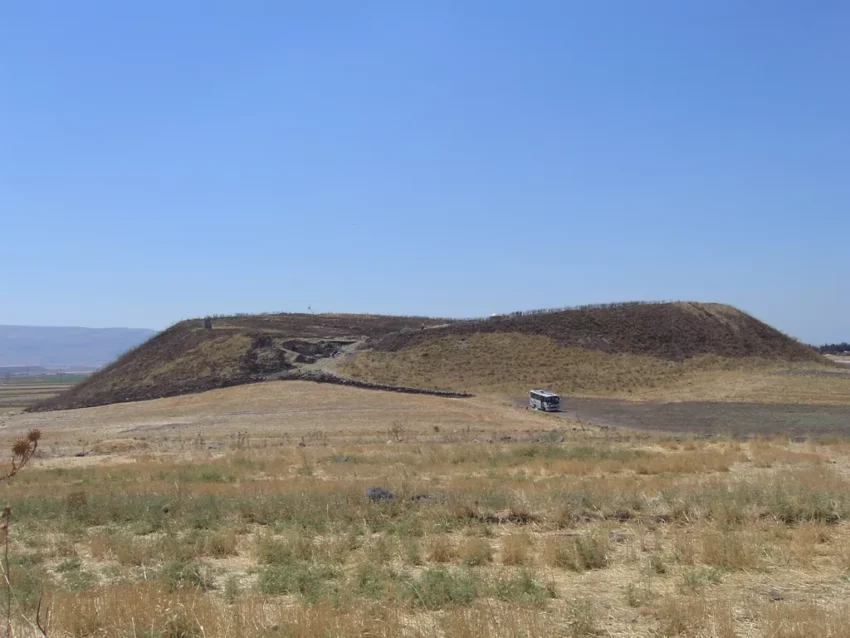Overview of Tell Qarqur
Tell Qarqur is a significant archaeological site located in the Orontes River Valley in western Syria. The site is positioned in the fertile Ghab valley and is close to the modern town of Jisr ash-Shugur and one kilometer west of the village of Qarqur. This double-mounded site has a rich history, spanning approximately 10,000 years of nearly continuous human occupation.
Get your dose of History via Email
Historical Significance
The earliest evidence of settlement at Tell Qarqur dates back to the Pre-Pottery Neolithic A period, around 8500 BC. The site was continuously inhabited through various historical periods, culminating in the Mamluk period around AD 1350. Tell Qarqur saw significant development during the Early Bronze Age (3000–2000 BC) and later during the Iron Age II (1000–500 BC).
One of the most notable historical references to Tell Qarqur is its likely identification with the ancient town of Qarqar. This site is famously associated with the Battle of Qarqar that took place in 853 BC, where a coalition of Levantine kingdoms, including forces from Damascus and Israel, confronted the Neo-Assyrian army led by Shalmaneser III. This battle is well-documented in Neo-Assyrian royal annals and the Kurkh Monoliths.
Archaeological Excavations
Archaeological interest in Tell Qarqur has been significant, with the first scientific excavations conducted in 1983 and 1984 by the American Schools of Oriental Research (ASOR) and Brigham Young University (BYU). These initial explorations were followed by more extensive excavations from 1993 to 2001 under the direction of Dr. Rudolph Dornemann. These later excavations revealed extensive remains from various periods, particularly from the Early Bronze Age IV and the Iron Age I–II. Notable findings included fortification walls, residential structures, and a temple complex from the later third millennium BC.
Excavations resumed in 2005 under the co-sponsorship of the University of Arkansas, revealing that Tell Qarqur not only endured but also expanded during the “4.2 kiloyear event,” a severe aridification phase that led to the decline of nearby civilizations. Artifacts from these excavations are currently displayed at the Hama Museum in Hama, Syria.
Recent Destruction and Damage
The archaeological site has suffered considerable damage in recent years. From 2014 to September 2017, the site was partially destroyed by the Turkistan Islamic Party, an Al-Qaeda offshoot. This destruction was documented through satellite imagery and reports indicated that the destruction was supervised by non-Syrian civilians. Additionally, the site has experienced significant looting and damage due to military activities during the Syrian Civil War.
Conclusion
Tell Qarqur stands as a testament to the rich and complex history of human civilization in the Orontes River Valley. Despite recent damages, the site remains a crucial source of historical and archaeological knowledge, shedding light on thousands of years of human endeavor and resilience. The ongoing research and preservation efforts are vital for understanding the cultural heritage of this region and the broader historical narratives of the Near East.
Sources:

